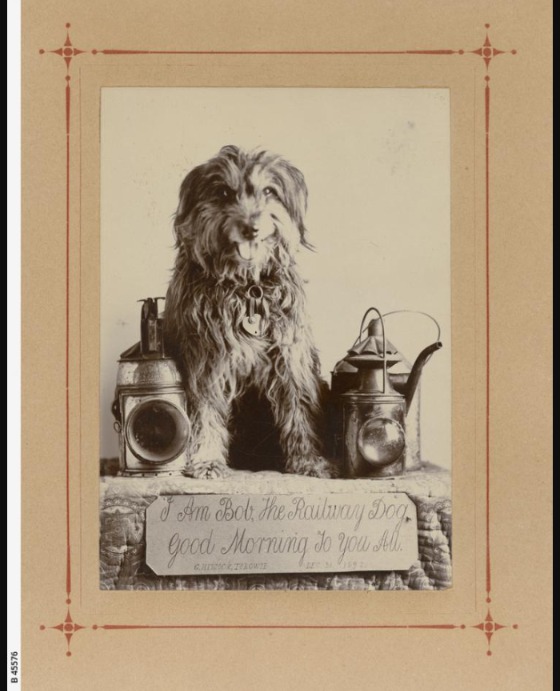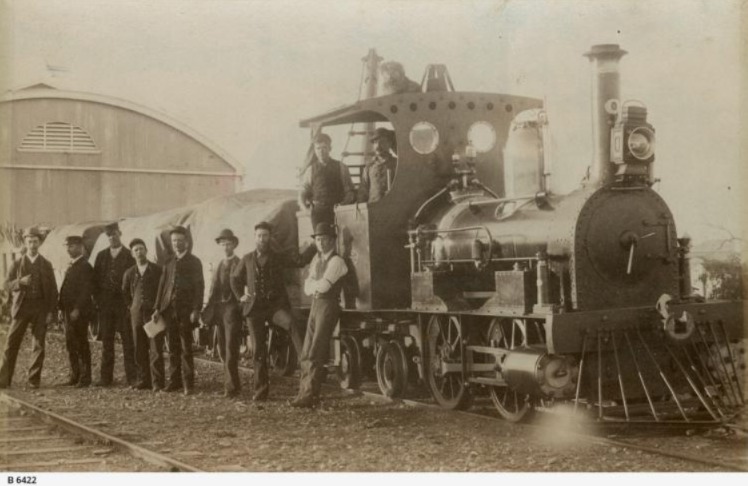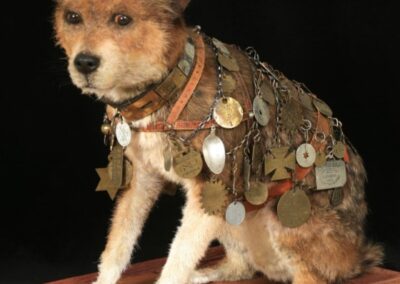
Some dogs are lap dogs. Some are working dogs.
And then there was Bob, the shaggy, scruffy, coal-dust-covered collie who decided the South Australian railways were his kingdom.
His life wasn’t cushioned with warm fireplaces or fenced yards.
No — Bob’s heart beat in rhythm with the pounding pistons of steam engines, and his story is the kind of legend that proves freedom, loyalty, and adventure can all belong to one unlikely pup.
Bob was born in 1882 in the town of Macclesfield, South Australia. Back then, dogs like him were often bred for rabbit hunting, and many ended up in rough circumstances.
Bob was sent along with a group of hounds destined for the harsh rabbit fields near Carrieton. That could have been the end of his tale — a life chasing rabbits across scrubland.
But fate stepped in. William Seth Ferry, a railway guard, saw something different in Bob.
He took him home, giving him a new chance. But here’s the thing about Bob: he wasn’t content to sit in a yard or follow the usual rules of dog ownership.
He had bigger dreams, and those dreams came with whistles, smoke, and the open tracks of South Australia’s rail system.

Bob quickly became a familiar sight across the countryside. He wasn’t a dog tied to a single family or town.
Instead, he became a passenger of sorts — though “passenger” doesn’t quite capture it.
Bob would leap aboard steam engines, often curling up on the coal heap in the tender, riding along as though he had purchased his ticket like anyone else.
By day, he traveled the lines, riding between stations, gazing out as the landscape flew by.
By night, he might bunk down with drivers or guards, only to set off again at dawn when the next whistle blew.
No matter how far he roamed, Bob wasn’t lost — he was exactly where he wanted to be.
And make no mistake: Bob wasn’t just tolerated. He was adored.
Railway workers, passengers, and even entire towns came to recognize the scruffy brown collie with the adventurous spark.
Every legend needs a symbol, and Bob had his: a brass collar that carried an inscription almost as famous as the dog himself.
“Stop me not, but let me jog, for I am Bob, the driver’s dog.”
That collar was more than a trinket. It was a declaration of independence, a passport that told the world Bob wasn’t straying — he was traveling. It let people know he belonged, not to one master, but to the railway itself.
The stories about Bob are endless.
He supposedly preferred the “Yankee” engines — the loud, dramatic locomotives that thundered along the longer routes — and would ignore the smaller suburban trains as if they were beneath him.
Passengers reported him hopping off trains at one station, only to appear hours later on another, grinning as if he’d just taken a grand adventure.
In third-class compartments, he was known to bark until travelers moved, claiming the seat as his own. And unlike most dogs, he wasn’t rattled by the clanging, hissing, smoke-belching chaos of steam travel.
To Bob, that was home.

By the time Bob was in his prime, he had become something rare: a folk hero. Newspapers wrote about him.
Locals swapped tales of his journeys. Children grew up hearing about “the driver’s dog” who roamed the rails. He belonged to everyone and no one — which, in truth, was exactly how Bob liked it.
When he died in 1895, his passing didn’t just mark the end of a dog’s life. It felt like the end of an era. But Bob’s spirit never really left.
His brass collar was preserved and today rests in the National Railway Museum at Port Adelaide. In Peterborough, a statue of him stands proudly, celebrating his wild, wonderful life.
Even now, people stop to hear the story of the dog who could never be stopped.
So why does Bob’s story endure more than a century later? Because Bob wasn’t just a dog. He was a reminder of freedom, of loyalty on his own terms, of adventure chosen over comfort.
He wasn’t groomed, pampered, or even particularly “owned.” Yet he gave joy to everyone who crossed his path.
In a world that often tries to fence in or tie down both people and animals, Bob lived differently.
He carved out his own place — not by following the rules, but by running beside the rails until the rails became his.
And maybe that’s why people still smile when they hear the words:
“Stop me not, but let me jog, for I am Bob, the driver’s dog.”
Because deep down, we all wish we could live as freely as Bob.



